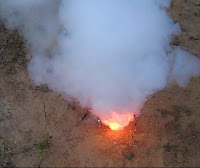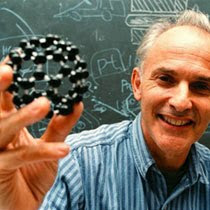Smoke Bomb Materials
The smoke bomb you would purchase from a fireworks store usually is made from potassium chlorate (KClO 3 - oxidizer), sugar (sucrose or dextrin - fuel), sodium bicarbonate (otherwise known as baking soda - to moderate the rate of the reaction and keep it from getting too hot), and a powdered organic dye (for colored smoke). When a commercial smoke bomb is burned, the reaction makes white smoke and the heat evaporates the organic dye. Commercial smoke bombs have small holes through which the smoke and dye are ejected, to create a jet of finely dispersed particles. Crafting this type of smoke bomb is beyond most of us, but you can make an effective smoke bomb quite easily. There are even colorants you can add if you want to make colored smoke. Let's start out with instructions for the easiest/safest type of smoke bomb you can make: Smoke Bomb Materials sugar (sucrose or table sugar) potassium nitrate, KNO 3 , also known as saltpeter (buy it online or you can find this at som





